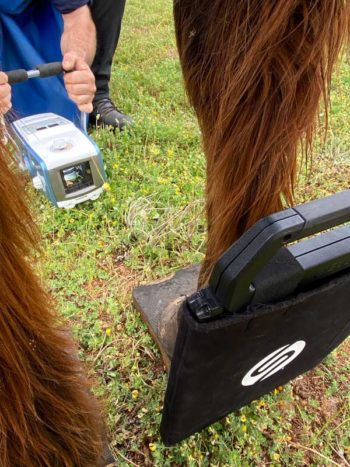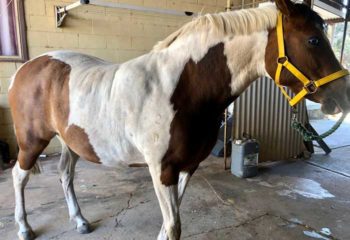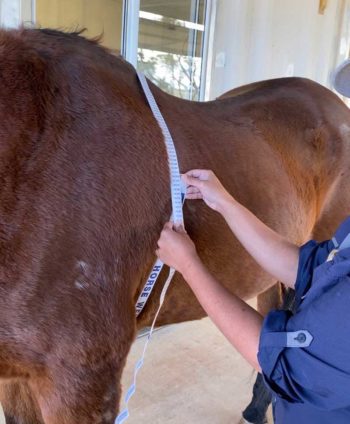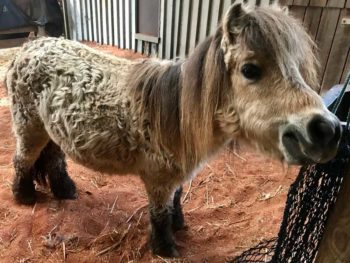5 Oct 2022
Update on medical management of equine endocrine disorders
David Rendle BVSc, MVM, CertEM(IntMed), DipECEIM, FRCVS outlines treatment and management options for issues related to laminitis and pituitary pars intermedia in equids.

Hyperinsulinaemia is central to the development of most cases of laminitis seen in equine practice.
Laminitis that develops as a consequence of inflammation or non-weight-bearing lameness has a different aetiopathogenesis, and is rare by comparison. Equine metabolic syndrome (EMS) describes the all too common conflation of obesity, hyperinsulinaemia and predisposition to laminitis.

Pituitary pars intermedia is commonly associated with laminitis, although evidence for its role in the aetiopathogenesis of laminitis is lacking. Laminitis should be a preventable condition; however, anecdotal experience would suggest its prevalence is not decreasing, despite greater understanding of its risk factors and aetiopathogenesis (Figure 1).
Hyperinsulinaemia and laminitis
Studies demonstrating that laminitis can be induced by protracted increases in insulin concentration1,2 were pivotal in understanding that hyperinsulinaemia is central to the development of laminitis.
These have been followed by work in field cases demonstrating that the pathological changes that occur in EMS and pituitary pars intermedia dysfunction (PPID) are consistent with those that occur in laminitis that is induced experimentally with hyperinsulinaemia3,4.
In experimental studies, laminitis has been induced by maintaining insulin concentrations at u/l concentrations in the hundreds. Recent epidemiological studies have demonstrated that much lower (non-fasted) insulin concentrations are associated with a marked increase in laminitis risk.
Menzies-Gow et al5 demonstrated that in a cohort of 446 native ponies, the risk of laminitis developing within three years was 21.5% if insulin was above 21.8u/L. This was more than double the 10% risk identified across the whole of the population studied.
Similarly, Knowles et al6 identified a 6% risk of laminitis within a four-year period in ponies with a non-fasted insulin more than 21.6u/L. Strikingly, if insulin was more than 45.2u/L, the incidence of laminitis within the next four years rose to 69%6.
Insulin concentration has also been associated with the risk of recurrence of laminitis7. Recent guidelines issued by the Equine Endocrinology Group8 have advised assessing insulin concentration in horses, ponies or donkeys presented with:
- laminitis
- divergent hoof rings
- chronic lameness
- generalised obesity
- regional adiposity
- infertility
- sheath swelling
- wellness examination
- pre-purchase examination
- suspicion of endocrine disease
- contemplation of intra-articular or systemic steroids
Not all horses with EMS and increased laminitis risk exhibit the typical obese phenotype, and assessment of hyperinsulinaemia may provide clinically useful information that can guide management and treatment decisions.

Insulin concentrations can be assessed following a period of fasting, following feeding, following oral ingestion of a known quantity of sugar, or IV infusion of glucose and/or insulin. These different tests have advantages and disadvantages, and are discussed in detail elsewhere9,10.
IV tests are less convenient and, therefore, unlikely to be performed in ambulatory practice, but can be helpful in demonstrating tissue insulin resistance, which may not be demonstrable using other tests. Measurement of serum insulin concentration without any form of sugar challenge is the most straightforward test in practice, but false negative results are common. Unexpected negative results when measuring basal insulin concentration should be followed up with some form of sugar challenge test.
Measurements taken following feeding with forage are more variable, but are more sensitive than fasted samples and are potentially more helpful, as they give an indication of the insulin concentrations (and hence laminitis risk) occurring under normal management conditions.
In horses that are obese or at risk of laminitis, demonstrating hyperinsulinaemia can be a powerful stimulus for management change. Different owners will be motivated to change their horses’ management by different triggers.
For some, the identification of hyperinsulinaemia and diagnosis of EMS encourages them to address a medical condition where implementing change to manage obesity isn’t sufficient motivation.
Furtado et al11 explored horse owners’ attitudes to weight loss and found that although most owners of obese horses are aware their horses are overweight, they fail to identify many of the fat deposits, underestimate the degree of adiposity, and have a tendency to normalise the fat that is present and fail to see it as harmful11. Although owners are aware of the potential for obesity to be harmful (and that laminitis is a potential consequence), they have a tendency to see fat in their horses as physiological or have an optimism bias that their horses won’t develop laminitis11.
Experience from human health care indicates that more frequent contact with medical professionals results in better outcomes; a veterinary diagnosis of EMS may similarly be associated with improved outcomes, as it facilitates regular monitoring of insulin concentrations, assessment of clinical progress and evaluation of compliance.
Management of EMS
Surveillance data would suggest at least 50% of UK horses are overweight or obese (Figure 2).
The increasing prevalence of obesity has paralleled rises in obesity in other domestic species, and indeed our own species, as we live in an increasingly obesogenic environment.
Dietary management and increased exercise (laminitis permitting) should be the focus of efforts to manage hyperinsulinaemia and, hence, reduce the risk of laminitis (Figure 3), with pharmaceuticals being a secondary consideration.

It should, in theory, be straightforward to manage the weight of our domestic animals by manipulating their dietary intake; however, this overlooks the complex behavioural and psychological factors that influence the relationships horse owners have with their pets. Therefore, strategies are often required that can circumnavigate the barriers that cannot be broken down, and would otherwise prevent weight loss and reduction in laminitis risk.
The use of pharmaceuticals as a treatment for obesity and insulin dysregulation has traditionally been a last resort, but as evidence increases for the potential welfare benefits of accelerated weight loss and reduced laminitis risk, so the use of these drugs has increased. With the risk of laminitis being so high in certain populations, it seems entirely appropriate that a more proactive approach to management is taken to prevent unnecessary suffering.
If insulin cannot be reduced through management alone then the use of pharmaceuticals to reduce insulin concentrations (and potentially adiposity) should be considered.
Ertugliflozin, canagliflozin and velagliflozin
Sodium glucose co-transport-2 (SGLT2) inhibitors have become a popular treatment for human type-two diabetes mellitus, and show considerable promise as a means of limiting hyperinsulinaemia and reducing laminitis risk in horses. Through inhibiting re-uptake of glucose in the kidney, and thereby promoting the excretion of glucose in urine, circulating insulin concentrations are lowered.
The risk of laminitis has been shown to reduce following the administration of velagliflozin12,13. Canagliflozin has also been shown to be effective in reducing insulin concentrations in horses with insulin dysregulation14. Ertugliflozin has recently become available in the UK as an extemporaneous paste formulated for horses. Like velagliflozin and canagliflozin, ertugliflozin has been shown to reduce insulin concentrations within days in horses with hyperinsulinaemia (author’s unpublished data), resulting in striking improvements in clinical comfort in horses with active laminitis.
In a series of 51 horses with hyperinsulinaemia and laminitis, the administration of ertugliflozin at 0.05mg/kg by mouth once a day was associated with a marked and statistically significant reduction in median insulin concentrations from more than 300u/L to less than 50u/L over 30 days. In addition, a statistically significant reduction was recorded in lameness scores within 30 days, with most horses showing increased comfort within a few days of starting treatment.
The use of ertugliflozin was associated with polyuria and polydipsia in a small proportion of horses and a statistically significant increase in serum triglyceride concentrations. The increase in triglycerides was not associated with clinical signs of hyperlipaemia in any cases, and after an initial increase at 30 days, triglyceride levels returned to baseline levels.
In human medicine, treatment with SGLT inhibitors is discontinued if feed is withheld for more than 24 hours and it would seem prudent to do the same in horses. The author used to monitor triglyceride concentrations, but no longer sees a need to intervene in response to increased levels, and so advises careful monitoring of feed intake and close observation for any clinical signs of hyperlipaemia, such as dullness and inappetence.
It is speculated that the triglycerides identified by current laboratory biochemistry analysers in horses that are on treatment with ertugliflozin are not the same as measured in horses with hyperlipaemia.
Better characterisation of lipid profiles in horses is warranted. Larger clinical field trials are required, but the work performed to date suggests the SGLT-2 inhibitors could be very useful in preventing and treating laminitis associated with hyperinsulinaemia.
Metformin
Metformin became a popular treatment for horses with recurrent “pasture-associated” laminitis prior to other alternatives becoming available in the UK15. Its popularity has waned with the availability of levothyroxine and ertugliflozin, and a growing perception that it does little to reduce the risk of laminitis.
Some evidence exists that metformin may reduce insulin concentrations in ponies with EMS, but it does not appear to reduce adiposity12. Whether metformin makes a clinically relevant difference to insulin concentration or laminitis risk in the field has not been adequately determined.
If metformin is being used then it is generally administered at 15mg/kg to 30mg/kg two to four times per day. It is likely to be more effective if it can be administered three or four times per day.
Levothyroxine
With the availability of a palatable paste for horses, the use of levothyroxine for the management of EMS increased in the UK following a long history of use in the US.
The administration of levothyroxine to obese horses with a history of laminitis results in both weight loss and improvements in insulin sensitivity compared to controls16.
In healthy horses, levothyroxine administration is associated with a reduction in insulin concentrations, a doubling of insulin sensitivity, an increase in insulin disposal rate, a decreased insulin response to glucose and an increase in insulin receptors on adipocytes17,18.
The effects on insulin dynamics coupled with the promotion of weight loss make levothyroxine a compelling treatment option for obese horses that are suffering from, or are deemed to be at risk of, laminitis.
Several investigations have now demonstrated that levothyroxine is safe and well tolerated – even when used for very long periods or at extremely high doses18-20. Levothyroxine is typically used at 0.1mg/kg by mouth once daily; however, anecdotally lower doses may be effective.
Historically, three to six months of treatment has been recommended, but this is an arbitrary figure and the drug should be used until target weight is reached, at which time the dose should be reduced gradually over a few weeks.
Where finances do not permit three to six months of treatment, shorter courses can be helpful in promoting weight loss and in encouraging owners that it is possible to effectively reduce the weight of their horses. The author tends to treat for one month at a time, reassessing the clinical response before prescribing a further month of treatment, if appropriate.

Monitoring of body condition is important as responses are variable – some horses will lose weight rapidly; others may not lose weight without compliance with dietary recommendations. When target weight is reached, it is helpful to assess insulin concentrations to determine whether persistent insulin dysregulation is present, which may need to be managed indefinitely.
PPID
PPID has historically been associated with laminitis; however, its importance as a cause of laminitis remains to be fully elucidated, as does the mechanism that may link the two conditions.
While the link between PPID and laminitis might have been overstated in the past, PPID remains a very common endocrinopathy of ageing horses and can result in a range of clinical signs that have the potential to compromise quality of life (Figure 4).
Good management in the form of regular farriery, coat clipping, prompt recognition of infectious disease and diet are important, but the condition is irreversible and most patients benefit from pharmaceutical treatment. The only pharmaceutical treatments with credible evidence of benefit are dopamine agonists.
Pergolide
Pergolide has been used widely for the treatment of PPID for more than 20 years. Most horses exhibit a good improvement in clinical signs and a reduction in adrenocorticotropic hormone (ACTH) concentration, even though in many, ACTH does not return to within normal reference intervals.
Anecdotally, pergolide seems to reduce the incidence of laminitis, although recent evidence indicates that dopamine agonists do not improve insulin dynamics21 and no evidence exists that pergolide reduces the risk of laminitis in horses with PPID22.
A recent study indicated that insulin dysregulation is refractory to treatment in horses with PPID, even when they are treated with pergolide (McGowan and Hertzel, unpublished data). If a concern exists over laminitis then it is essential that insulin concentrations are assessed and managed specifically, alongside the administration of dopamine agonists.
The registered form of pergolide is a tablet some horses are reluctant to ingest. A survey that compared the amount of pergolide purchased with the amount that should have been dispensed demonstrated that compliance was very poor, with only 48% of horses receiving the amount they should have. In some breeds and age groups, compliance was as low as 25%23. This may have implications for the control of clinical signs, even though it did not appear to be associated with any difference in laboratory control in the study.
An extemporaneous pergolide paste preparation has been shown to be safe and effective in horses that are refractory to treatment with the registered tablets24, and in a recent field trial, the extemporaneous paste resulted in equivalent clinical and endocrinological responses to the registered tablet (Luoda Pharma, unpublished data).
The use of pergolide in the treatment of PPID was the subject of a recent systematic review25.
Cabergoline
Cabergoline is a dopamine agonist that has the same mechanism of action as pergolide, but is used as a long-acting IM injection. It is being used as an alternative to pergolide in the US as a fortnightly injection and has the potential to facilitate treatment in PPID cases that are difficult to treat daily with an oral medication.
Clinical data on the efficacy of cabergoline in the treatment of PPID is lacking, but anecdotal reports are promising and evidence exists that it is effective in suppressing the output of the pars intermedia26.
Anecdotally, a dose of 0.005mg/kg (which corresponds to under 1ml) given intramuscularly once per week provides good control of ACTH concentrations and clinical signs of PPID. The low volume of injection makes it very easy for owners to administer.
Conclusions
EMS and PPID are two of the most common conditions in equine practice, and can have a devastating effect on equine welfare.
Interest in both conditions has increased markedly, and that interest has been associated with improvements in diagnostic testing and the development of novel treatments that have the potential to improve the control of both conditions.
Diet and exercise will always be the mainstay of effective management of EMS and prevention of laminitis; however, ertugliflozin and other insulin-sensitising drugs have the potential to reduce insulin concentrations and the incidence of laminitis in high-risk or refractory cases. They may also promote recovery from laminitis.
In the management of PPID, pergolide remains the mainstay of treatment and the paste preparation provides an alternative where the registered product is not suitable.
Cabergoline offers an interesting alternative, but clinical data from horses with PPID is limited.
- Some of the drugs in this article are used under the cascade.
